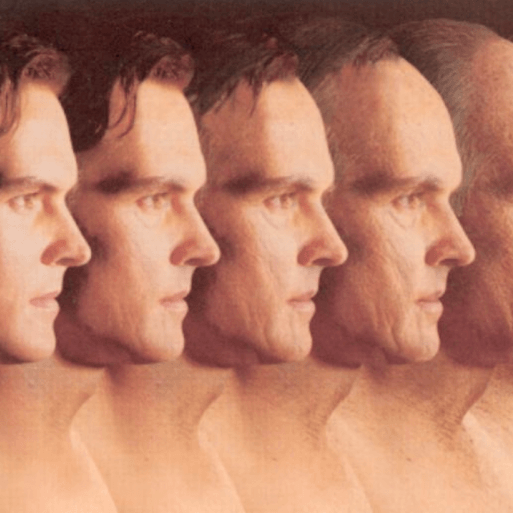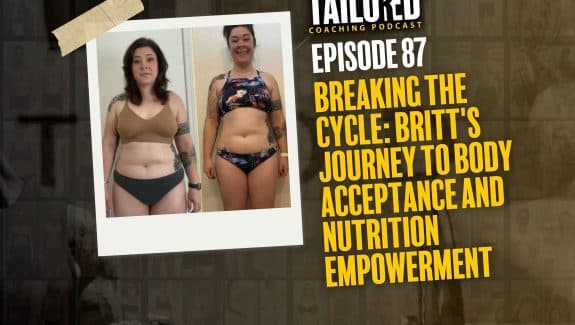“So, it’s happening to you too? Your metabolism keeps slowing down each and every birthday?”
“Yeah, just part of getting old I guess. Right??”
No, not just “part of getting old”. I can’t even count on my fingers, and all my toes, how many times I’ve heard someone tell me this is what is going on with them.
Or that is the main reason they finally came to work with me, because they’re getting older and “I just can’t eat like I used too!”… It almost makes me laugh saying this to be honest.
Because for someone like myself, my metabolic rate has increased with each year of age… How? Training smarter, moving more, eating better, and simply taking care of my body and hormones.
So lets tackle the first and most important piece of this article….
“The Aging Metabolism Theory”
Or as I like to call it, “Old Geezer Metabolic Syndrome”. Well the truth of the matter is simple…. It’s sort of a myth.
That’s right, the idea that your metabolism actually slows down as you age is not completely true (thank god).
But now you’re wondering, “How come I’ve been slowly gaining weight each year? I can’t eat as much as I once did and it seems to get worse year after year!”
One thing I won’t deny or try to claim untrue is that many people do gain weight as they age and they can’t eat as much as they used too. But there’s more to this story. Lets dive in…
What else changes as we age?
- Amount of muscle mass.
- Amount of daily activity or movement.
- Our caloric intake (which directly influence the ability to obtain more of the above).
Let’s go over to what’s actually been studied in a clinical setting before we go any further, because many studies have been done that prove there to be a drop in metabolic rate in aging men and women.
But because of studies proving the opposite, we now believe that to be a correlation rather than causation.
The early studies that claimed metabolic rate does slow down as we age usually used sedentary men and women of different ages. Using a group of people in their 20’s, 40’s, 50’s, 60’s and above were used and they saw a decline as the age increased.
Makes complete sense. They were all pretty much sedentary, meaning they’re getting further and further away from the time they were very active human beings.
Your metabolism doesn’t just shut off at age 23 because you graduated college and you’re an adult now, it takes time to down regulate. With more and more years living inactive, the metabolism naturally slows down.
Then a research group from the University of Colorado took the study even further; they added a study of active vs. non-active and then a study with all active individuals (age ranging in all groups, just like above).
Turns out the people who were active had a faster metabolism, held onto more muscle, and required more calories per day – all things that led to a faster metabolism.
The group that had all active individuals, just differing age groups, actually had very minimal differences in metabolic rate – Regardless of age!
The average difference in metabolic at the end was 71.3 versus 73.8 per hour (older vs. younger).
2 things to mention here:
- That’s an average. Meaning we cannot say that some older men or women didn’t have higher metabolisms then the younger individuals, it just means the average was higher in the younger group.
- It was noted that it was mainly do to exercise output, meaning it could also be a matter of the younger having more or better muscle mass retention or even the likelihood of the older group having more injuries enabling their abilities…
Going out on a limb here, but it is well worth bringing to attention. Because even a great study doesn’t tell us everything.
So with all this being said, there are clearly 3 things that can increase our metabolic rate OR avoid the downfall of it, that are controllable.
Let’s go over those…
Overall Activity

This is probably the simplest way to get things moving and reassure that our metabolism doesn’t slowly turn geezer’ish as we get older (slow down)
As stated above, as we get older and life brings on all the responsibilities it does, we tend to slowly become less and less active. Since activity is one of the major components to keeping your metabolic healthy and fast, our first move should be to keep as much activity as possible in our lives.
Adding to that, the next two major keys to having a faster metabolism are almost impossible without being an active individual. So we really need to jump on this one here.
Now, training is clearly the top of the totem pole when it comes to being active and boosting metabolism. But that doesn’t just mean training, it means moving more in general.
So things like walking, standing, talking, hiking, and even socializing more often can literally help this. So many studies are being published on N.E.A.T. now and it’s amazing how important the smallest bouts of activity can be for fat loss, health and our metabolism.
Next we can go to specific training and we’ll start by laying down the most important ways to train if you want to increase your metabolism and avoid it slowing down as you get older.
Resistance Training
In other words, lift some heavy shit a few days a week. Strength training is a HUGE hormonal benefit and metabolic booster.
I suggest a couple splits for the general public that would be most beneficial for 90% of the results people are looking for.
a. Upper/Lower Split – 4 Days per week – 2 Upper/2 Lower
b. Full Body Days – 3-4 Days per week
HIIT Cardio
When it comes to cardio, this is the biggest bang for your buck and it’s because of the metabolic effect it has compared to LISS Cardio (Low Intensity Steady State).
I suggest performing this at least once per week for just about every single client I have, even those looking to put on muscle mass. But for those looking to lose fat or simply increase their metabolic rate, I’d suggest 2-4 days per week of the following:
a.) Assault AirBike (this has been proven as one of the most effective tools for what we’re currently discussing).
b.) Battle Ropes
c.) Shuttle or Hill Sprints
d.) Kettlebell Swings
e.) Barbell, Dumbbell, or Kettlebell Complexes
During all of these movements, you’d perform anywhere from 10-30 seconds of all out intense and explosive movement. Then you’d rest anywhere from 30-120 seconds – may seem long, but if you’re doing the intervals correctly you’ll need it.
Muscle Mass
The amount of muscle we have on our bodies has a direct influence of what our metabolism looks like and how fast it works.
More muscle, more calories burned at rest – which means our RMR (resting metabolic rate) is higher and we’ll burn more calories doing literally almost anything we do.
Next, more muscle usually leads to better performance in the gym… Guess what happens when we perform better? We burn more calories, usually can increase our HR higher, and essentially can increase our metabolic rate through exercise more efficiently.
Another added benefit that many don’t think of, directly relates to the next topic of controllable way to avoid metabolic slow down with age…
‘Calories have somewhere positive to go!’
Muscles are extra layers of tissue with lots of myocyte’s (muscle cells) and in order to keep those layers of tissues and cells alive, functioning, and multiplying, they need fuel and proteins to grow – just like any other tissue in the body.
In other words, your body will feed them calories that you’re ingesting which is great for two reasons. First being that it’s another place for calories to end up at, that isn’t fat. Second is because we can eat more food, which plays a big role in our metabolic rate.
Something else to consider is that as we age, it can be difficult to maintain muscle mass or grow new muscle tissue on our body. It’s not impossible by any means; it’s just more difficult.
In fact, this actually has been proven and the two best ways to ensure it does not happen to you – is to start training more frequently first and foremost, because our muscles need the stimulus to maintain just as they do to grow.
Second is to increase your protein intake and properly spread it across your day. Studies have shown that as we age, our protein turnover rate changes and the breakdown can increase. They also showed that increasing protein levels in older clients has helped a ton and to make it even more beneficial, it’s recommended to spread your protein out evenly across your meals so you have a higher muscle protein synthesis response (*Warning: nerd talk).
Daily Caloric Intake
How many calories or how much food we eat is a big influencer on what our metabolism looks like. Typically the more we can eat, the faster our metabolism is.
But this doesn’t mean “eat more = faster metabolism = leaner body”.
Shit do I wish it did! It actually means, the more calories our body can handle (without putting on fat or becoming a health risk) the more our metabolic rate will speed up and possibly maintain a higher rate.
Since our metabolism is directly influence by our daily caloric intake, which has been proven in multiple studies over the years, we can all finally put to rest the “6 meals per day theory” and really eat as often as we’d like.
Our metabolism does not change from the amount of meals we consume daily; it changes by the total daily calorie intake. So 2, 3 or 6 meals, it doesn’t matter.
Now, before everyone starts piling in the calories so they can “Boost their metabolism like Boom-Boom said too”… We need to nail down the first two points I’ve made today, especially number one (be active more often).
So what have we really learned here today?
- “Old Geezer Metabolic Syndrome” is not a real thing.
- Your metabolism does NOT slow down as you age; your lifestyle is the cause of the slow down.
- Metabolic rate is a direct influence on how lean you are and also has a huge effect on general health.
- Muscle is good. Get some!
- Be more active and get your calories in check.
If you’re still struggling, want specific training and/or nutrition coaching, click here and apply now – we’ll be in touch in 24 hours or less and discover exactly what’s stopping you from seeing the results you want.

























































































































































































































































































































































































































































































